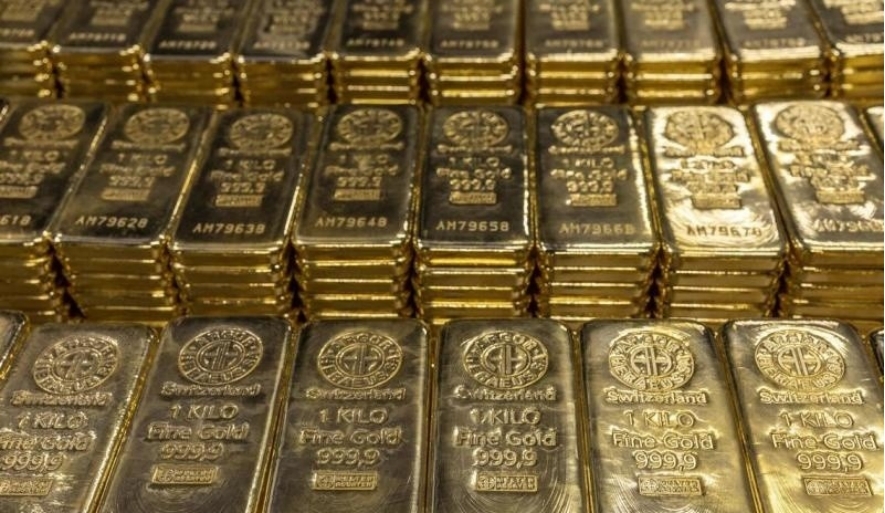
When the price of New York gold broke through $4350 per ounce and Shanghai gold soared above $999 per gram, the sharp trend of over 50% increase since the beginning of the year has once again made gold the focus of global financial markets. Behind the crazy influx of funds into the gold market, from central bank reserves to retail investment, from policy decisions to geopolitical games, is not simply a case of "chasing after the rise and killing the fall", but the inevitable result of multiple deep logic interweaving and resonating.
The reconstruction of the global monetary credit system is the fundamental underlying logic behind the rise in gold prices. As a "credit currency without credit endorsement", the value of gold always fluctuates in the opposite direction of mainstream currency credit. The continuous weakening of the current US dollar credit has become the "first spark" igniting the gold market. The size of the US federal government debt has exceeded $36 trillion, and the debt to GDP ratio has risen to over 130%. The government shutdown event caused by funding disputes in 2025 further exposes its fiscal sustainability crisis.
In this context, the global trend of "de dollarization" resonates with the central bank's gold buying frenzy. In the first half of 2025, the global net purchases of central banks reached 415 tons, and 95% of the surveyed central banks plan to continue increasing their holdings, setting a new historical high. The People's Bank of China has increased its holdings for 10 consecutive months, and as of the end of August, its gold reserves reached 74.02 million ounces, about 2302.28 tons. This "selling US bonds to buy gold" operation is not an isolated case, but a collective choice of various countries to diversify their reserve assets.
The shift in monetary policy by the Federal Reserve has become a key catalyst for activating the investment attributes of gold. Gold does not generate interest income, and its attractiveness is highly dependent on the interest rate environment - during periods of interest rate decline, the opportunity cost of holding gold significantly decreases, while conversely, its attractiveness decreases. In September 2025, the Federal Reserve officially launched interest rate cuts, and the market expects that there will be multiple interest rate cuts in the future. The expectation of a 25 basis point cut in October and another 50 basis point cut in December has gradually become a market consensus. This policy shift has completely changed the investment value of gold. Looking back at historical data, after the 2008 financial crisis, the Federal Reserve initiated quantitative easing, causing gold prices to soar from $800/ounce to $1920/ounce within five years; The zero interest rate policy during the 2020 pandemic also pushed gold prices above the $2000 mark.
In response to the policy shift, the concentrated outbreak of global risk events has maximized the safe haven properties of gold. The current world economy is in a special period of multiple risks: the Russia-Ukraine conflict continues to ferment, and geopolitical tensions have not eased; The political situation in France is turbulent, the Japanese economy is stagnant, and the growth momentum of major economies is insufficient; The repeated trade frictions between China and the United States have impacted the stability of the global supply chain.
The influx of market funds accelerates the gold market from a "slow bull" to a "fast bull", forming a self reinforcing positive cycle. The solid underlying logic has attracted full chain funds from institutions to individual investors to enter the market. In the third quarter, the managed assets of global gold ETFs exceeded $472 billion, with a single quarter earnings of $26 billion. Funds continued to be injected into North America and Europe, and ordinary investors also "got on board" through tools such as gold ETFs.
It is worth noting that although the logic of the current gold bull market is clear, the market is not without divergence and potential risks. Bank of America suggests that gold prices may rebound to $3525 in the fourth quarter, while Goldman Sachs is bullish at $4900 and Citigroup even sees $5000, reflecting the possibility of short-term volatility. From the recent trend, the gold price quickly fell back to $4280 after surging to $4379, with an adjustment of nearly $100, indicating that the risk of high-level volatility has begun to emerge.
However, in the long run, the core logic supporting the rise of gold has not changed: the weakening of US dollar credit and the trend of de dollarization are difficult to reverse, and the strategic demand for central bank gold purchases will continue; The slowdown in global economic growth and the normalization of geopolitical risks have resulted in the long-term safe haven value of gold; The opening of the downward cycle of interest rates has provided a favorable environment for gold investment.
For ordinary investors, understanding the logic behind the surge is far more important than being fixated on specific points. Gold should not be seen as a tool for short-term speculation, but rather as a "ballast" in asset portfolios, following Dalio's principle of diversified allocation, with allocation ratios not exceeding 15% of household assets. In specific operations, high premium physical gold in gold stores should be avoided, and low-cost tools such as gold ETFs should be preferred. By participating in a staggered layout at low prices, long-term trend dividends can be shared while reducing short-term volatility risks.

A large number of buildings in the Gaza Strip were destroyed by the war.
A large number of buildings in the Gaza Strip were destroye…
The US Senate has passed a compromise version of the Nation…
The European Commission released a package of measures for …
Venezuela's Vice President and Oil Minister Rodriguez said …
On December 16 local time, the Ministry of Space Science Ex…
Recently, a highly anticipated phone call between the defen…